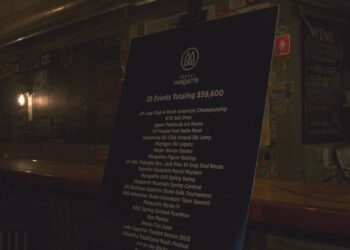The 1936 heatwave affected a wide area of the Midwest with the hottest temperatures centered over the northern Plains. Though not as extreme in terms of high temperatures, another historic heatwave was experienced in 1901. The hottest temperatures were centered over the Mid-Mississippi Valley.
A map of the high temperatures on July 22, 1901 shows an extensive area indicating temperatures of 100° of higher. Exactly one week earlier, the 100s surged northward into Upper Michigan.
On July 15, 1901, Marquette’s high temperature soared to 108°! It’s the hottest temperature ever recorded in the Upper Peninsula.
Back at the turn of the century, “men felt it was their manly duty to swelter in scorching hot weather for dignity’s sake,” wrote a reporter in the local newspaper. On this scorching hot day, it was noted that men in town were “emboldened to cast their coats aside.” They walked the streets and did their businesses in shirtsleeves.
The hot weather didn’t last long in the U.P. but hung on for the better part of a month and a half in the big cities to the south and east. A newspaper article noted “alarming variations” in the world’s “atmospheric conditions” in 1901 that supposedly led to the hot weather.
Back before air conditioning, heat waves were deadly. During the summer of 1901, an estimated 9,500 people died due to the effects of the unrelenting heat. It’s the deadliest heat-related disaster in U.S. history.


















